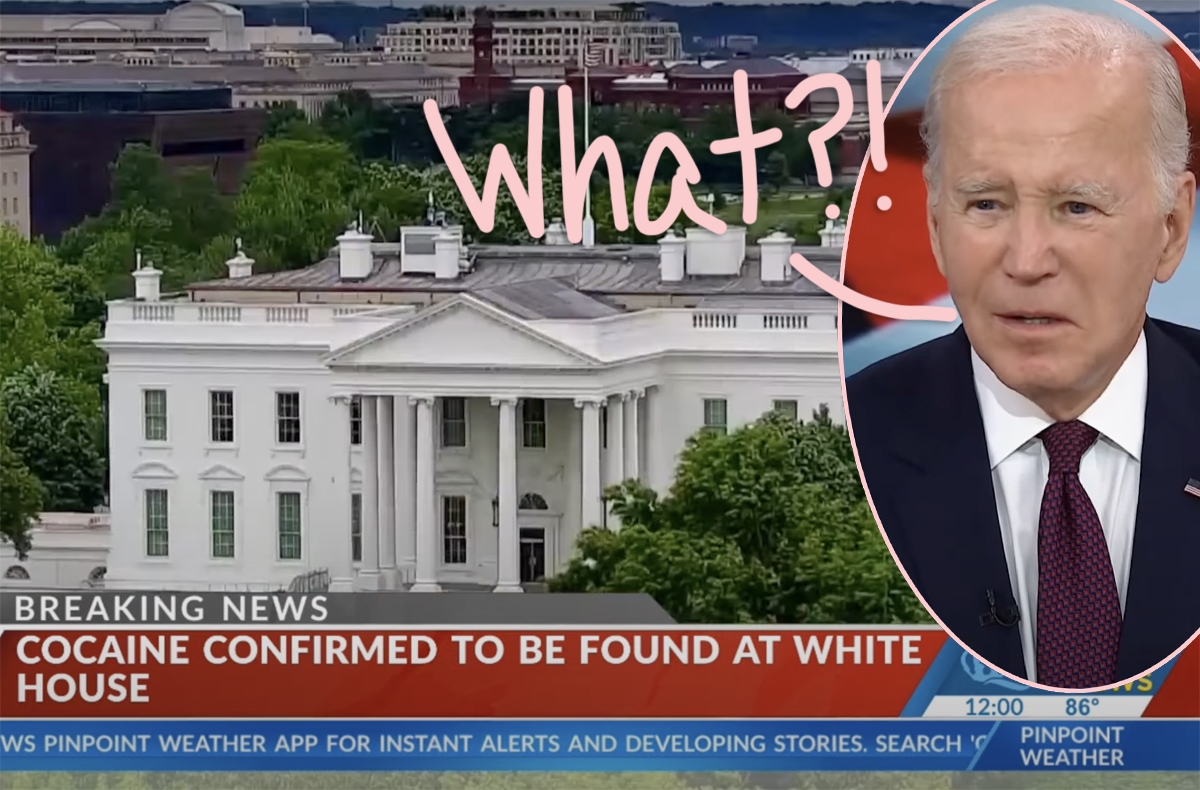Table Of Content

Since his release, he has earned a Class A driver’s license and has worked as a truck driver. He is dedicated to his family and mentors young people so that they might learn from his mistakes. His family and friends uniformly attest to his dedication to his work, family, and youth in his community. “Without physical evidence, the investigation will not be able to single out a person of interest from the hundreds of individuals who passed through the vestibule where the cocaine was discovered,” Secret Service officials said in the summary. "Without physical evidence, the investigation will not be able to single out a person of interest from the hundreds of individuals who passed through the vestibule where the cocaine was discovered," the agency said. "At this time, the Secret Service's investigation is closed due to a lack of physical evidence."
Secret Service closes White House cocaine investigation citing lack of evidence
OCDETF identifies, disrupts and dismantles the highest-level criminal organizations that threaten the United States using a prosecutor-led, intelligence-driven, multiagency approach. "If the White House complex is not secure, Congress needs to know the details, as well as your plan to correct any security flaws," Cotton said. Fire was called to evaluate the substance and determined it was "non-hazardous." Unlike some other federal entities, the Secret Services does not have drug-sniffing dogs.
‘Reagan gave us something to rap about’: how hip-hop has interacted with US politics
The Secret Service said in a statement the White House was closed as a precaution as emergency crews investigated, and that the District of Columbia fire department was called in to evaluate and determine that the substance was not hazardous. Following the discovery, safety closures were implemented around the White House. This response was designed to ensure that the found substance was not a chemical or radiological material that threatened the security of the White House.
Published July 5, 2023
Chuck Rosenberg, a former U.S. attorney and acting administrator of the Drug Enforcement Administration under then-President Barack Obama, said law enforcement agencies need to consider their resources when making decisions about who and what to investigate. Gugliemi said the small amount of cocaine, 208 milligrams or about .007 ounce, would only result in a misdemeanor charge in the District of Columbia and the agency determined that did not warrant the expenditure of resources it would take to interview 500 people. There wasn't enough of either on the bag to draw any conclusions, the Secret Service said in a statement. She has written for outlets including the Washington Examiner, Daily Signal and Alexandria Times.
The Secret Service found cocaine at the White House, AP sources say
Friends and others attest to his trustworthiness and his dedication to his family and colleagues. The Secret Service is leading a full review of how the substance got into the West Wing, law enforcement officials said, including examining cameras and entrance logs to determine who had access to the space. Officials caution this will be a challenging investigation, and while there are some cameras in the West Wing, it's unclear if anyone was captured on those cameras with the bag of cocaine. Ricky Donnell Tyler– Columbia, South CarolinaRicky Donnell Tyler is a 54-year-old man who was convicted of non-violent drug offenses.
Comer: Oversight Committee Must Assess White House Security Practices After Discovery of Cocaine
Secret Service investigates cocaine found at White House - BBC.com
Secret Service investigates cocaine found at White House.
Posted: Wed, 05 Jul 2023 07:00:00 GMT [source]
The cocaine was found in an entrance area between the foyer and a lower-level lobby, the sources said. The entrance is near where some vehicles, like the vice president’s limo or SUV, park. It is one floor below the main West Wing offices and on the same floor as the Situation Room and a dining area. At the time of publication, there was no credible evidence to link the drug found in the White House to any individual or group, much less the president's son.
Secret Service Examining How Suspected Cocaine Ended Up at the White House
Washington — Subsequent testing confirmed that a powdery substance discovered by the Secret Service at the White House on Sunday was cocaine, a law enforcement official said Wednesday, as questions linger about how the drug got into the building. The agency, along with the FBI, tested the packet to determine it was cocaine and looked for any fingerprints or DNA evidence. Video footage of the area where the baggie was found also provided no evidence to narrow the possible suspects beyond a list of roughly 500 staff members and visitors who passed through during a weekend earlier this month. "Without physical evidence, the investigation will not be able to single out a person of interest from the hundreds of individuals who passed through the vestibule where the cocaine was discovered," the Secret Service said. Still, its discovery set off rounds of questions for the White House, including about its security protocols and who had access to the area where the substance was found. White House press secretary Karine-Jean Pierre said the space is "heavily traveled" by staff and visitors, including those taking tours.
Secret Service ends White House cocaine investigation with no leads
Secret Service officials say they have received the letter and will respond. President Joe Biden and his family were at the presidential retreat at Camp David, Maryland, not the White House, when officers discovered the cocaine. In updating where the cocaine was found, officials said that area was also heavily trafficked.

Politics
Biden and his family left for Camp David on Friday and returned to the White House on Tuesday. The U.S. Secret Service takes its mission to protect U.S. leaders, facilities, and events seriously and we are constantly adapting to meet the needs of the current and future security environment. The substance was located inside a receptacle used to temporarily store electronic and personal devices prior to entering the West Wing.
The Situation Room itself is being renovated, and has not being used for months. The lobby is also open to staff-led tours of the West Wing, which are scheduled for nonworking hours on the weekends and evenings. Those tours are invitation-only and led by White House staff for friends, family and other guests. Most staffers who work in the complex can request an evening or weekend tour slot, but there is often a long wait list. There were tours on the day, a Sunday, the drugs were found, as well as on the two preceding days. The bag containing the cocaine remains in a federal laboratory, where it will be tested for DNA and fingerprints, the official said.
The Secret Service found cocaine at the White House, AP sources say - The Associated Press
The Secret Service found cocaine at the White House, AP sources say.
Posted: Tue, 04 Jul 2023 07:00:00 GMT [source]
Anthony Guglielmi, a spokesperson for the Secret Service, told Forbes that the white powder was found in the White House Sunday evening and that preliminary tests showed it was cocaine. More testing was done to review the chemical composition of the powder, the statement continued. WASHINGTON — Multiple officials involved in the White House cocaine inquiry now say the bag of powder was found in a cubby near the White House's West Executive entrance, not the formal West Wing lobby, as was previously reported. According to the AP, the president and his family — including Hunter Biden — left for Camp David, a presidential retreat in the Catoctin Mountain Park near Thurmont, Maryland, on June 30, 2023. In reality, the cocaine was discovered in a common area of the West Wing, according to several reputable publications, including AP and CBS News. According to Reuters, the West Wing includes the Oval Office, cabinet room and work space for presidential staff.
NBC reported the drug was in a small, zippered bag, and that it was unclear how long it had been in the White House. The Secret Service on Thursday announced it had closed its investigation into who left a small packet of cocaine in the White House without finding the culprit, and a spokesman for the agency told NBC News it did so without conducting interviews. Meanwhile, Secret Service investigators put together a list of several hundred individuals who may have accessed the area where the drugs were found.
Katrina Polk– Washington, D.C.Dr. Katrina Polk is a 54-year-old woman who pleaded guilty to a non-violent drug offense at the age of 18. She successfully served her sentence and completed the terms of her supervised release. Since her release, Dr. Polk has furthered her education, including earning a PhD in public policy and administration. She has also engaged in extensive community service, locally and nationally, and is a respected advocate for the elderly.
Homeland Security’s National Biodefense Analysis and Countermeasures Center analyzed the item for any biothreats. Tests conducted at the facility came back negative and gave formal confirmation that the substance was not a biological threat. "It's deeply frustrating," Rep. Nancy Mace, a South Carolina Republican, told reporters. "This is one of the most secure locations in the world, some of the best law enforcement officers in the world. And they don't have any answers." A small amount of a white powdery substance was found in the White House on Sunday evening, according to a person familiar with the episode, and an initial test by emergency response workers determined that it was cocaine. An initial test of the white powdery substance found inside the White House on Sunday evening showed it was cocaine.
The discovery of the "unknown item" prompted a "precautionary closure" of the White House, Secret Service spokesman Anthony Guglielmi acknowledged in a statement Tuesday. "When it comes to visitors to the West Wing, they come for many reasons, obviously we do have West Wing tours that occur here on campus," she said, adding tours took place Friday, Saturday and Sunday. Without that kind of physical evidence, the investigation has run out of road. "They are currently investigating what happened over the weekend. So I would have to refer you to the Secret Service, the Secret Service, on all of this." Press secretary Karine Jean-Pierre declined to answer when she was asked at Wednesday's briefing which of the two West Wing entrances was involved, saying she would let the Secret Service address that. Later, in an email to Snopes, he confirmed the cocaine wasn't found in a library and was instead found "in an area of the West Wing."
Sen. Tom Cotton, R-Ark., sent a letter Wednesday asking Secret Service Director Kimberly Cheatle to release information about where the cocaine was found. He also asked half a dozen questions about access to the White House, other instances of illegal drugs' being found in the complex and security procedures, requesting answers by July 14. Jean-Pierre reiterated that the cocaine was found in a heavily traveled area that visitors often transit and noted that staff-sponsored tours were held on Friday, Saturday and Sunday. He and his family were at the presidential retreat at Camp David, Maryland, not the White House, when the cocaine was discovered. The blurry timeline and the number of people who walk through the area where the cocaine was found could make it difficult to determine who was responsible, an official familiar with the investigation said. This might not be the first time illegal drugs were brought into or used at the White House.

No comments:
Post a Comment